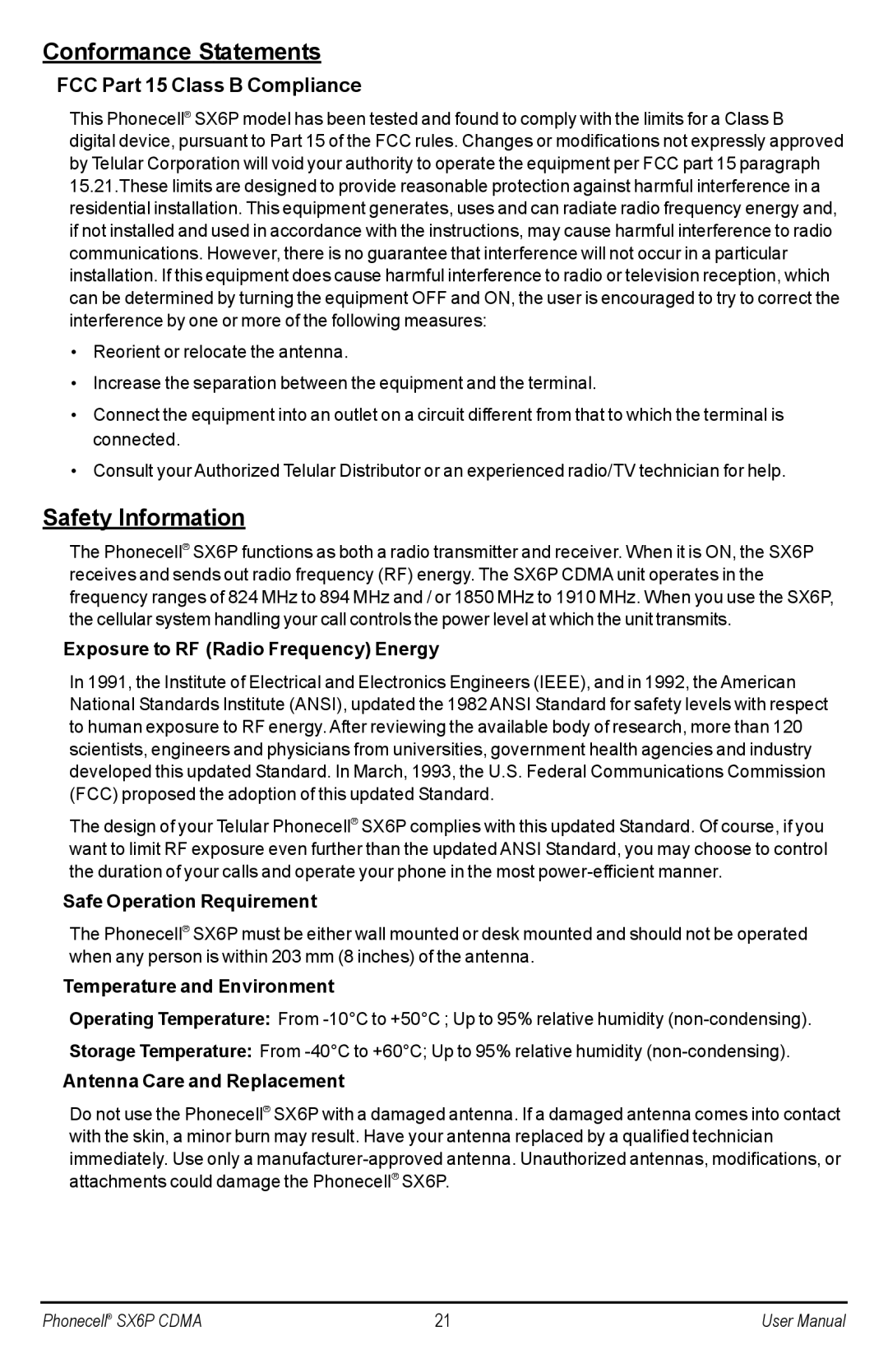Conformance Statements
FCC Part 15 Class B Compliance
This Phonecell® SX6P model has been tested and found to comply with the limits for a Class B
digital device, pursuant to Part 15 of the FCC rules. Changes or modifications not expressly approved by Telular Corporation will void your authority to operate the equipment per FCC part 15 paragraph 15.21.These limits are designed to provide reasonable protection against harmful interference in a residential installation. This equipment generates, uses and can radiate radio frequency energy and, if not installed and used in accordance with the instructions, may cause harmful interference to radio communications. However, there is no guarantee that interference will not occur in a particular installation. If this equipment does cause harmful interference to radio or television reception, which can be determined by turning the equipment OFF and ON, the user is encouraged to try to correct the interference by one or more of the following measures:
•Reorient or relocate the antenna.
•Increase the separation between the equipment and the terminal.
•Connect the equipment into an outlet on a circuit different from that to which the terminal is connected.
•Consult your Authorized Telular Distributor or an experienced radio/TV technician for help.
Safety Information
The Phonecell® SX6P functions as both a radio transmitter and receiver. When it is ON, the SX6P receives and sends out radio frequency (RF) energy. The SX6P CDMAunit operates in the frequency ranges of 824 MHz to 894 MHz and / or 1850 MHz to 1910 MHz. When you use the SX6P, the cellular system handling your call controls the power level at which the unit transmits.
Exposure to RF (Radio Frequency) Energy
In 1991, the Institute of Electrical and Electronics Engineers (IEEE), and in 1992, the American National Standards Institute (ANSI), updated the 1982 ANSI Standard for safety levels with respect to human exposure to RF energy. After reviewing the available body of research, more than 120 scientists, engineers and physicians from universities, government health agencies and industry developed this updated Standard. In March, 1993, the U.S. Federal Communications Commission (FCC) proposed the adoption of this updated Standard.
The design of your Telular Phonecell® SX6P complies with this updated Standard. Of course, if you want to limit RF exposure even further than the updated ANSI Standard, you may choose to control the duration of your calls and operate your phone in the most
Safe Operation Requirement
The Phonecell® SX6P must be either wall mounted or desk mounted and should not be operated when any person is within 203 mm (8 inches) of the antenna.
Temperature and Environment
Operating Temperature: From
Storage Temperature: From
Antenna Care and Replacement
Do not use the Phonecell® SX6P with a damaged antenna. If a damaged antenna comes into contact with the skin, a minor burn may result. Have your antenna replaced by a qualified technician immediately. Use only a
Phonecell® SX6P CDMA | 21 | User Manual |
